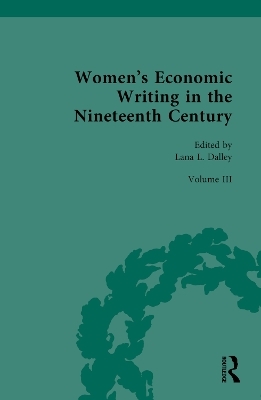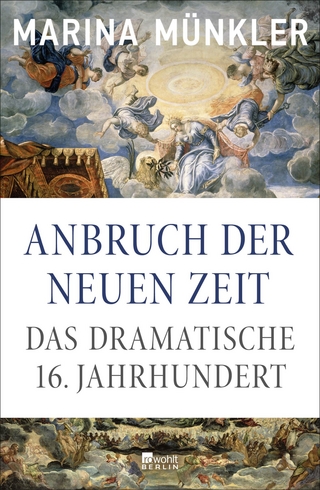
Women’s Economic Writing in the Nineteenth Century
Routledge (Verlag)
978-0-367-33724-7 (ISBN)
Lana L. Dalley is Professor of Victorian Literature, California State University, Fullerton, USA
Volume 3
General Introduction
Part 4. Labour
1. Mary Lamb, ‘On Needlework’, The Lady’s Magazine or Entertainign Companion for the Fair
Sex, Appropriated Solely to Their Use and Amusement, April 1815.
2. Caroline Norton, A Voice from the Factories. In Serious Verse (London, John Murray, 1836), pp. 15-23, 32, 38-40.
3. Anna Jameson, The Communion of Labour, a Second Lecture on the Social Employments of Women (London, Longman, Brown, Green, Longmans & Roberts, 1856)
4. Bessie Raynor Parkes, ‘A Year’s Experience in Woman’s Work’, Paper read at the conference of the National Association for Promotion of Social Science and published in English Woman’s Journal. No 6, October, pp. 112-121.
5. Rebecca Harding Davis, ‘Life in the Iron Mills’, The Atlantic Monthly. Vol 7, Issue 42, April 1861, pp. 430-451.
6. Mary Merryweather, Experience of Factory Life: Being a Record of Fourteen Years’ Work at
Mr. Courtauld’s Silk Mill at Halstead, In Essex (London, Victorian Press, 1862), pp. 6-17, 76-79.
7. Josephine Butler, ‘The Education and Employment of Women’, (Liverpool: T. Brakell, 1868), pp. 3-28.
8. Josephine Butler, An Appeal to the People of England on the Recognition and Superintendence of Prostitution by Governments (1869).
9. Emily Faithfull, ‘Women’s Work, with Special Reference to Industrial Employment, a Paper Read at the Meeting of the Society of Arts, March 29th 1871.
10. Ellen Barlee, Sketches of Working Women (London: Seeley and Co, 1871), pp. iii-iv, 190-206.
11. Emma Paterson, ‘The Position of Working Women and How to Improve It’, Labour News, April 1874, pp. 20-24.
12. Edith Simcox, ‘The Industrial Employment of Women’, Fraser’s Magazine, 19 February 1879, pp. 246-255.
13. Victoria Jeans, Factory Act Legislation: Its Industrial and Commercial Effects, Actual and Prospective (London, T. Fisher Unwin, 1892), pp. 5-19, 81-96
14. Nelly Booth Simmons, ‘Battle Hymn of Labor’, Arena 5, March 1892, pp. 401-4.
15. Adeline Knapp, One Thousand Dollars a Day: Studies in Practical Economics (Boston, The
Arena Publishing Company, 1894).
16. Clementina Black, An Agitator: A Novel (London: Bliss, Sands & Foster, 1894), pp. 1-14.
17. Jessie Boucherett and Helen Blackburn, ‘Women’s Work and the Factory Act’, The Condition of Working Women and the Factory Acts (London: Elliot Stock, 1896), pp. 64-76.
18. Beatrice Webb, Women and the Factory Acts, Fabian Tract No. 67. London, The Fabian Society, February 1896.
19. Olive Malvery, ‘In the Sweating Dens of West and East London’,te The Soul Market (New York, McClure, Phillips, and Company, 1907), pp. 169-181.
Part 5. Poverty and Philanthropy
20. Priscilla Wakefield, The Reports of the Society for Bettering the Condition and Increasing the Comforts of the Poor, Vol. IV. London, 1805, pp. 206-210.
21. Emma Sheppard, Experiences of a Workhouse Visitor (London, Nisbet and Co., 1857)< pp. 3-10.
22. Joanna Margaret Hill, ‘How Can We Eradicate the Pauper Taint from Our Workhouse
Children’, Paper read at the Social Science Congress held at Birmingham, 1868.
23. Florence Nightingale, ‘A Note on Pauperism’, 1869
24. Adelaide Procter, ‘The Homeless Poor’, in The Poems of Adelaide A. Procter (New
York: Universal Publishing Company, 1870).
25. Octavia Hill, ‘Organized Work Among the Poor’, in Homes of the London Poor (New York, State Charities Aid Association, 1875).
26. Jane Addams, ‘The Subtle Problems of Charity’, Atlantic Monthly. Vol. 83, Feb 1899, pp. 163-78.
Index
| Erscheinungsdatum | 20.07.2023 |
|---|---|
| Verlagsort | London |
| Sprache | englisch |
| Maße | 156 x 234 mm |
| Gewicht | 616 g |
| Themenwelt | Geschichte ► Allgemeine Geschichte ► Neuzeit (bis 1918) |
| Geisteswissenschaften ► Geschichte ► Regional- / Ländergeschichte | |
| Geschichte ► Teilgebiete der Geschichte ► Wirtschaftsgeschichte | |
| Geisteswissenschaften ► Sprach- / Literaturwissenschaft ► Anglistik / Amerikanistik | |
| Geisteswissenschaften ► Sprach- / Literaturwissenschaft ► Literaturgeschichte | |
| Wirtschaft ► Volkswirtschaftslehre | |
| ISBN-10 | 0-367-33724-X / 036733724X |
| ISBN-13 | 978-0-367-33724-7 / 9780367337247 |
| Zustand | Neuware |
| Informationen gemäß Produktsicherheitsverordnung (GPSR) | |
| Haben Sie eine Frage zum Produkt? |
aus dem Bereich


